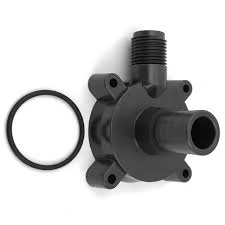Mobile:+86-311-808-126-83
Email:info@ydcastings.com
Connection flexibility in pump systems for enhanced performance and reliability options
Understanding Pump Flexible Connections Enhancing Efficiency and Performance
In various industrial applications, pumps play a critical role in the transport of fluids. However, the performance of a pump can be significantly influenced by its connection to other piping systems. One of the essential components in these setups is the flexible connection, which can greatly enhance the efficiency and reliability of pump operations.
What is a Pump Flexible Connection?
A pump flexible connection is a type of coupling or interface that allows for a degree of movement and flexibility between the pump and the piping systems. These connections are typically made from materials like rubber, polyurethane, or even metal, designed to accommodate misalignments, vibrations, and thermal expansion or contraction that occur during operation.
Importance of Flexible Connections
1. Vibration Absorption Pumps can generate substantial vibrations during operation, which can lead to wear and tear on connected pipes and fixtures. Flexible connections absorb these vibrations, reducing the risk of damage and extending the lifespan of equipment.
2. Misalignment Tolerance In real-world applications, achieving perfect alignment of pumps and connecting pipes is often challenging. Flexible connections can tolerate slight misalignments without causing stress on the pump or the piping system, thereby improving system integrity.
3. Thermal Expansion Management Variations in temperature can cause materials to expand or contract. Flexible connections accommodate these movements, preventing the development of stress points in rigid connections, which can lead to leaks or failures.
4. Simplified Maintenance The design of flexible connections can facilitate easier installation and maintenance of pumping systems. Since these connections can tolerate movement and misalignment, they often require less stringent alignment during installation, saving time and reducing costs.
Types of Pump Flexible Connections
Various types of flexible connections are available, each suited for specific applications
pump flexible connection

- Rubber Expansion Joints Commonly used in plumbing and HVAC systems, these joints can absorb vibrations and accommodate thermal expansion.
- Metal Expansion Joints These are designed for high-temperature applications and provide durability while managing movement within the piping system.
- Fabric Expansion Joints Made from woven materials, these joints are lightweight and flexible, suitable for lower pressure applications.
- Bellows These are typically used in applications requiring a significant range of motion and flexibility, providing the utmost resilience against piping movements.
Installation Considerations
When installing flexible connections, several factors must be considered
- System Design Understanding the specific requirements of the pumping system, including pressure, temperature, and media being transported.
- Proper Sizing Flexible connections must be adequately sized to avoid overstretching or excessive compression, which can lead to premature failure.
- Support It’s crucial to ensure that pipes and pumps are adequately supported and that the flexible connection does not bear the weight of the system.
Conclusion
In conclusion, pump flexible connections are vital components in numerous industrial applications. By providing relief from vibrations, tolerating misalignment, and accommodating thermal expansion, these connections enhance the overall efficiency and performance of pumping systems. As industries continue to evolve and demand more reliable and efficient fluid transport solutions, the significance of flexible connections in pump installations will become increasingly paramount. Investing in high-quality flexible connections not only extends the lifespan of equipment but also ensures safer and more efficient operations in various industrial settings.
-
Why Should You Invest in Superior Pump Castings for Your Equipment?NewsJun.09,2025
-
Unlock Performance Potential with Stainless Impellers and Aluminum End CapsNewsJun.09,2025
-
Revolutionize Your Machinery with Superior Cast Iron and Aluminum ComponentsNewsJun.09,2025
-
Revolutionize Fluid Dynamics with Premium Pump ComponentsNewsJun.09,2025
-
Optimizing Industrial Systems with Essential Valve ComponentsNewsJun.09,2025
-
Elevate Grid Efficiency with High-Precision Power CastingsNewsJun.09,2025











